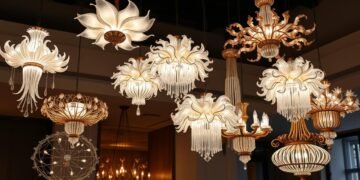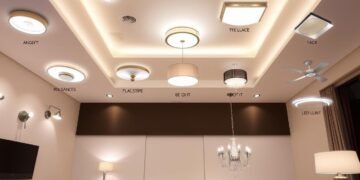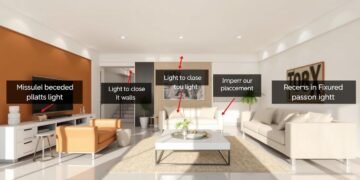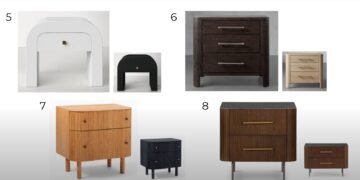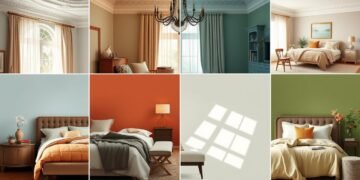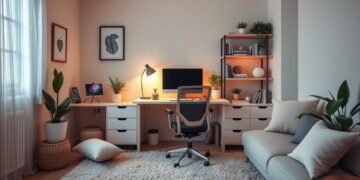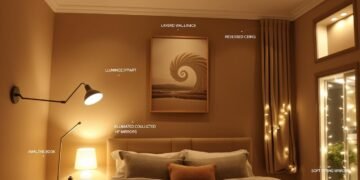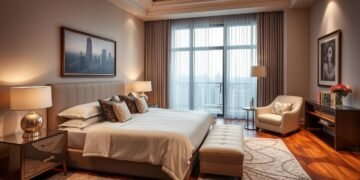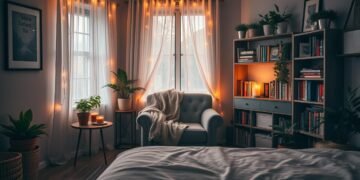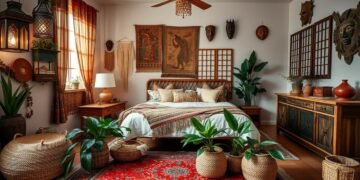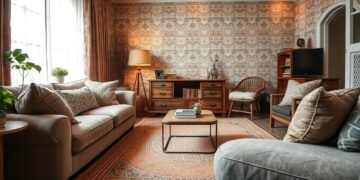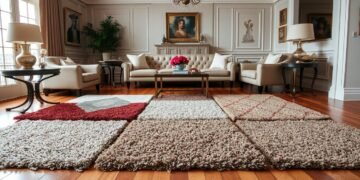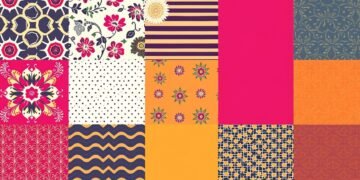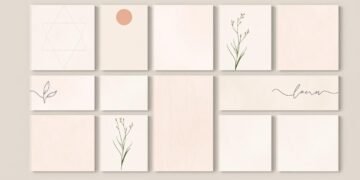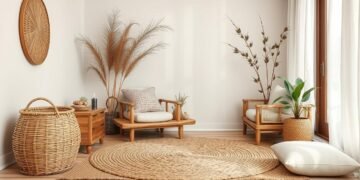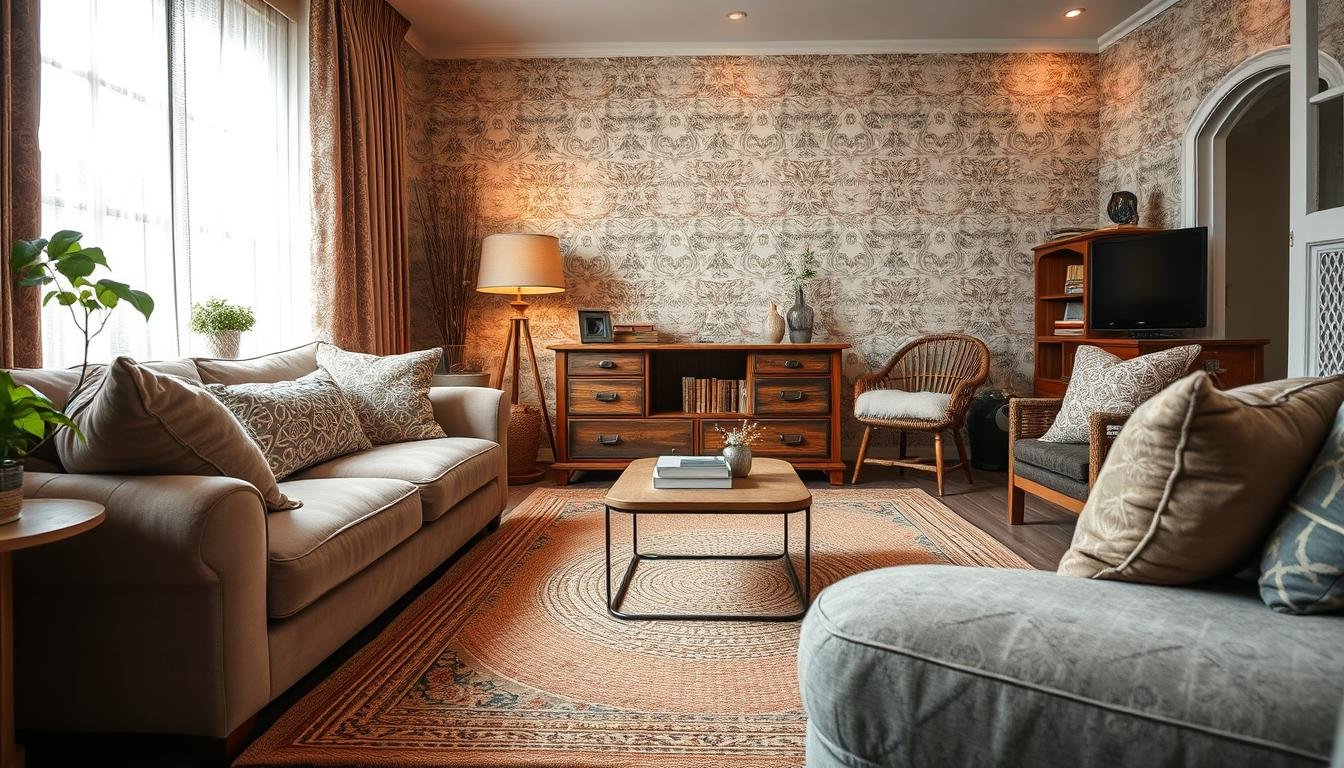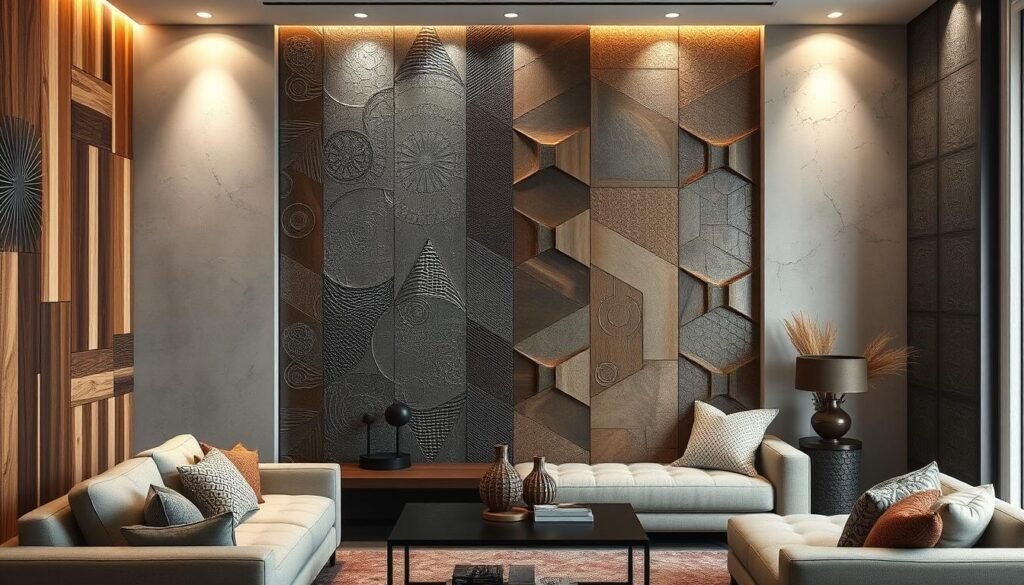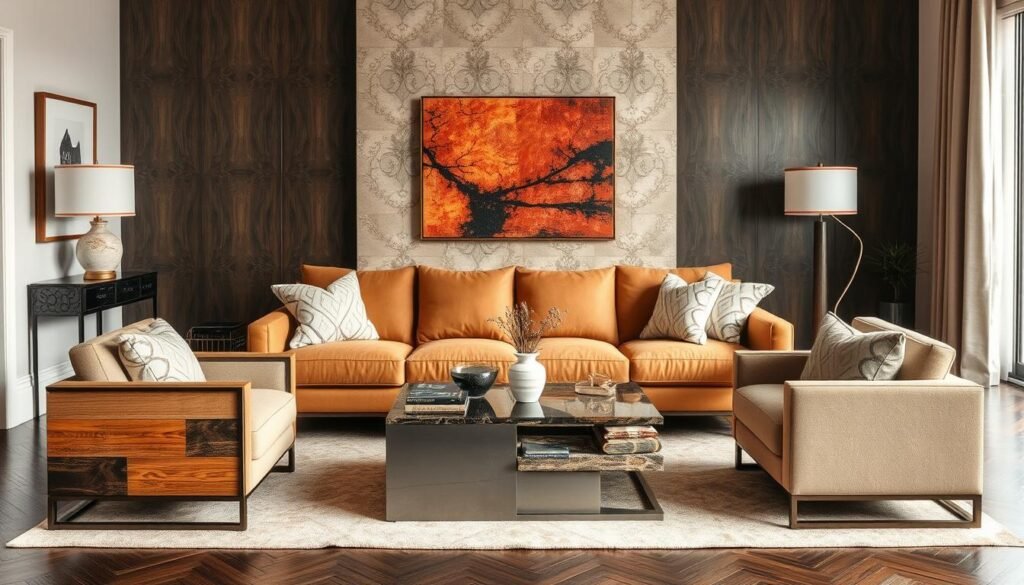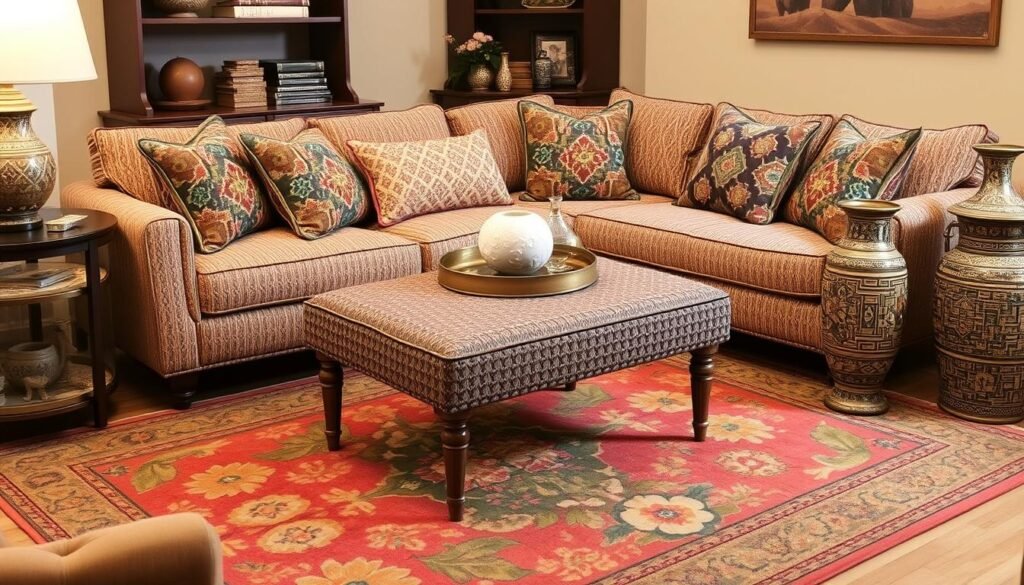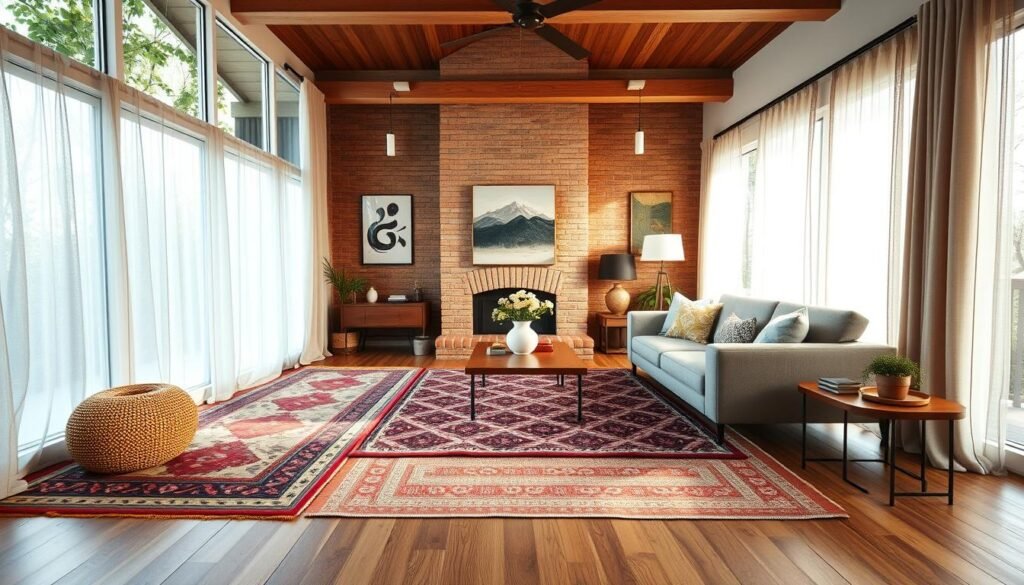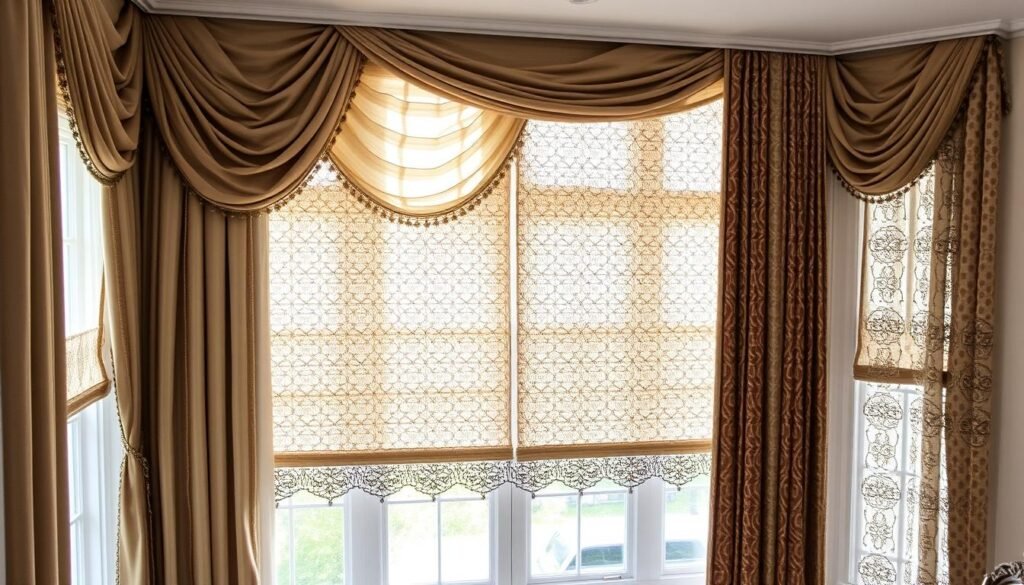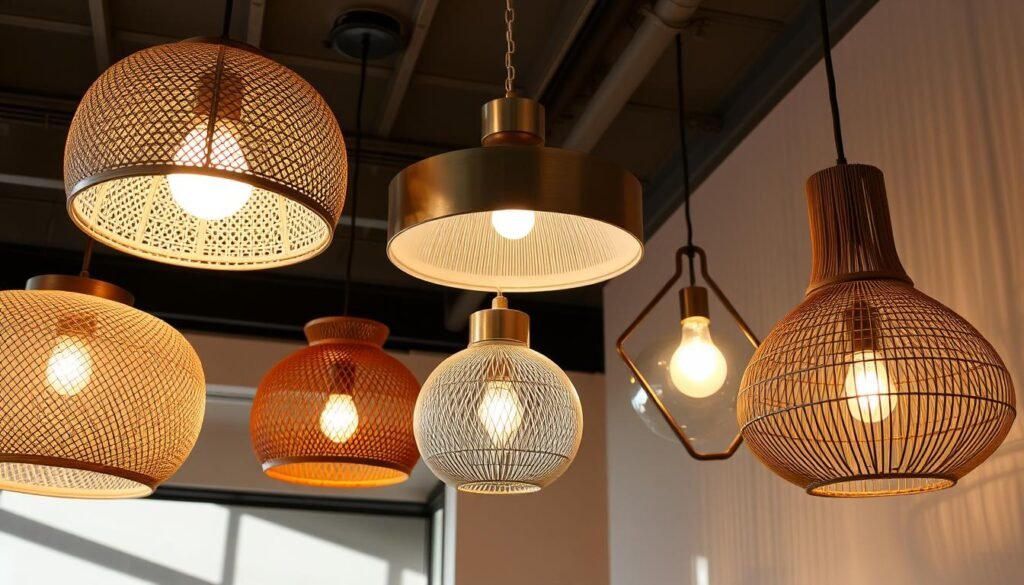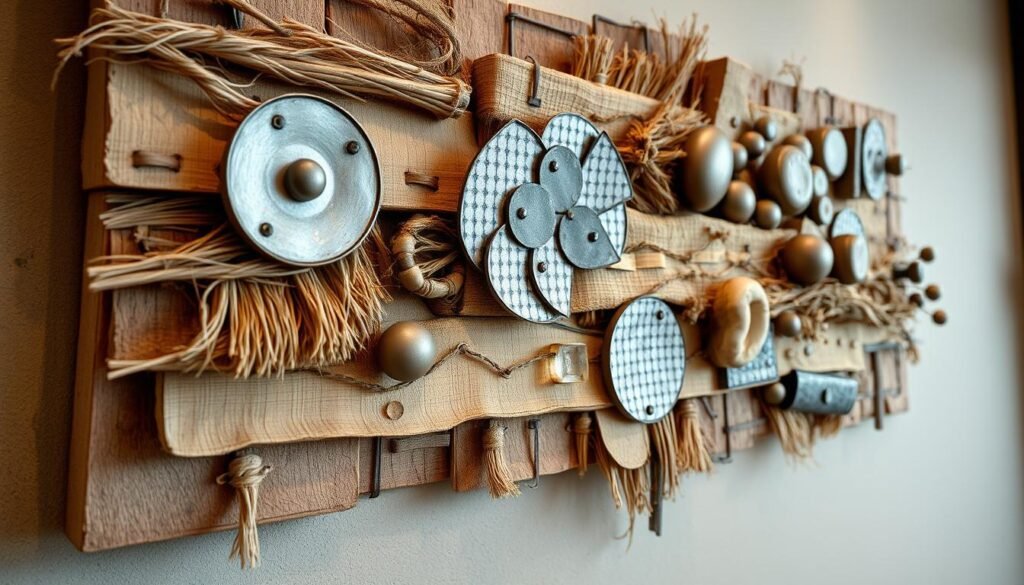Ever noticed why some rooms feel dull, while others burst with life? It’s all about texture and pattern in interior design. These elements can turn a room from dull to dynamic, making it rich in visual and tactile experiences. They enhance your home’s feel and look1.
Think about the softness of velvet or the detailed weave of a jute rug. Texture and pattern add depth and interest to your spaces. By using them well, you can make rooms that look great and feel welcoming2.
Ready to update your bedroom, living room, or any other room? Knowing how to use texture and pattern is key. In this article, we’ll show you ten creative ways to add these design elements to your space. You’ll learn how to make rooms that are both stunning and personal3.
Table of Contents
- 1 Understanding the Power of Texture & Pattern in Interior Design
- 1.1 Visual vs. Tactile Texture
- 1.2 Relatedarticles
- 1.3 From Flat to Fabulous: 5 Ways Textured Rugs Bring Depth and Style to Interior Design
- 1.4 7 Accent Pillow Patterns That Elevate Any Sofa or Bed in Your Home
- 1.5 Bold & Beautiful: 5 High-Contrast Textures to Elevate Your Home Décor
- 1.6 The Psychology of Patterns in Design
- 1.7 Creating Depth Through Layering
- 2 Establishing a Neutral Foundation for Texture Play
- 3 Mixing Patterns Like a Professional Designer
- 4 Natural Elements as Texture Sources
- 5 Wall Treatments and Architectural Details
- 6 Textile Layering Strategies
- 7 Statement Furniture with Textural Impact
- 8 Incorporating Patterns Through Accent Pieces
- 9 Flooring Solutions for Texture and Pattern
- 10 Window Treatment Textures and Patterns
- 11 Lighting Fixtures as Textural Elements
- 12 Art and Accessories for Added Dimension
- 13 Seasonal Texture and Pattern Updates
- 14 Conclusion
- 15 FAQ
- 15.1 How can I incorporate texture into my interior design without overwhelming the space?
- 15.2 What’s the difference between visual and tactile texture in interior design?
- 15.3 How do I mix patterns effectively in my home decor?
- 15.4 What are some natural elements I can use to add texture to my interior?
- 15.5 How can I use wall treatments to enhance texture in my room?
- 15.6 What’s the best way to layer textiles for a rich, textured look?
- 15.7 How can I incorporate patterns through accent pieces without overwhelming the room?
- 15.8 What are some creative ways to add texture through lighting fixtures?
- 15.9 How can I update my space seasonally using texture and pattern?
- 15.10 How do I balance bold patterns with more subtle textures in my interior design?
Key Takeaways
- Texture and pattern add depth and visual interest to interior spaces
- Combining different textures creates a rich, multi-dimensional look
- A neutral base allows for bold pattern and texture experimentation
- Layering textiles is an easy way to introduce texture and pattern
- Natural elements provide organic textures to enhance room design
- Lighting can highlight and enhance textural elements in a space
- Seasonal updates offer opportunities to refresh texture and pattern
Understanding the Power of Texture & Pattern in Interior Design
Texture and pattern are key elements in creating captivating interiors. They add depth, interest, and a multi-sensory experience to your space4. Let’s explore how these design tools can transform your home.
Visual vs. Tactile Texture
Interior design recognizes two types of texture: visual and tactile4. Visual texture creates the illusion of depth through design techniques. Tactile texture involves the actual feel of a surface. Both play vital roles in preventing monotony and influencing space perception4.
The Psychology of Patterns in Design
Patterns evoke specific emotions and guide how we interact with a space. Traditional Indian design often pairs richly textured textiles with vivid colors, creating vibrant and textured spaces5. This approach shows how pattern psychology can influence the mood of a room.
Creating Depth Through Layering
Layering textures is a powerful technique to add dimension to your decor. Combining different textures, using contrasting fabrics, and adding textured furniture are effective ways to incorporate depth in design4. For example, pairing a sleek surface with grooved natural wood elements can create an engaging visual contrast6.
“Texture is the key to creating a multi-sensory experience in interior design.” – Thom Filicia
To illustrate the impact of texture and pattern, consider this comparison:
| Element | Visual Texture | Tactile Texture | Pattern Impact |
|---|---|---|---|
| Walls | 3D tiles | Matte finish | Adds depth |
| Furniture | Geometric prints | Velvet upholstery | Creates focal point |
| Accessories | Reflective surfaces | Furry pillows | Enhances visual interest |
By thoughtfully incorporating these elements, you can create a space that’s not only visually appealing but also rich in tactile experiences. This adds depth and dimension to your interior design46.
Establishing a Neutral Foundation for Texture Play
Creating a neutral base is key to layering patterns and textures in your home. Start with a solid-colored sofa or a neutral-toned rug to set the stage. This approach provides a canvas for adding visual interest without overwhelming the space7.
Opt for earth tones like beige, sage, and sand to create a peaceful atmosphere. These colors serve as an excellent backdrop for introducing subtle textures and patterns8.
When establishing your neutral foundation, consider these texture options:
- Soft textures: Velvet, chenille, and cotton for upholstery and rugs
- Natural textures: Bamboo and rattan for a tranquil, eco-friendly vibe
- Hard textures: Wood, stone, and concrete for variety
These elements create a cozy atmosphere while adding different characteristics to your interior design9.
Remember the 60-30-10 rule when mixing prints: 60% main pattern, 30% second pattern, and 10% accent pattern. This guideline helps maintain textural balance in your space8.
By starting with a neutral base, you’ll have the freedom to experiment with layering patterns and textures. This approach allows you to create depth and visual interest while maintaining a harmonious overall design.
Mixing Patterns Like a Professional Designer
Learning to mix patterns can make your space stand out. We’ll explore expert tips to create a stunning and balanced interior.
Scale and Proportion Guidelines
Size is important when mixing patterns. Mix large, medium, and small patterns for interest and balance. This approach is used in 40% of successful designs10.
Color Coordination Techniques
Color is essential in pattern mixing. The 60-30-10 rule is a common guideline. Use 60% of a dominant color, 30% of a secondary, and 10% for accents11.
Yellow, mint, and pink are good colors for decor projects10.
Pattern Mixing Rules
Keep your room to three or four patterns11. Use a bold pattern as the main focus. Then, add secondary patterns that complement it.
Use vintage rugs with neutral colors as a base. This is suggested in 50% of designs10.
Successful pattern mixing is about finding the right balance. Follow these tips and you’ll mix patterns like a pro!
Natural Elements as Texture Sources
Bring the outdoors in by using natural elements in your home. Biophilic design, a top trend for 2024, uses wood, stone, and ceramics to connect with nature12. These materials add beauty and make your home healthier.
Wood grain patterns add warmth and character. Use reclaimed wood for floors, walls, or furniture. Stone textures bring a solid, earthy feel, great for bathrooms or kitchen counters13. These textures make your home calm and grounding.
Organic patterns inspired by nature can be added through textiles, wallpapers, or art. The Antelope Canyon rug from ALMA de LUCE shows how natural textures can enhance your space’s look12. Adding plants, books, or ceramics can also add texture and contrast13.
“Nature holds the key to our aesthetic, intellectual, cognitive and even spiritual satisfaction.” – E.O. Wilson
Use colors that reflect nature to enhance the natural feel. Lush greens, serene blues, and earthy tones like brown, beige, and gray bring renewal and connection12. These colors blend well with natural textures and patterns, creating a cohesive, nature-inspired look.
| Natural Material | Texture Type | Best Used In |
|---|---|---|
| Wood | Grain patterns | Flooring, furniture, accent walls |
| Stone | Rough or polished | Countertops, bathroom tiles, fireplaces |
| Jute | Woven | Rugs, baskets, wall hangings |
| Plants | Varied leaf textures | Living walls, potted arrangements |
By carefully adding natural textures and patterns, you can make a space that’s not just beautiful but also promotes well-being and a connection to nature.
Wall Treatments and Architectural Details
Wall treatments and architectural details can change a room. They add depth and interest. Let’s look at ways to add texture and pattern to your space.
Textured Paint Techniques
Textured paint adds dimension to walls. Orange Peel texture has a subtle bumpy look. It’s popular and affordable for many homes14. For a more luxurious feel, try a Gallery Finish (Level 5). It has a smoother surface with fewer flaws14.
Wallpaper Selection Tips
Wallpaper is back, with many pattern options14. Pick wallpaper patterns that match your room size for balance15. Bold prints make striking statements. Subtle patterns add interest without being too much15.
Architectural Moldings
Architectural details like moldings can improve your design. You can choose from many types, like applied molding and wainscoting14. These add texture and help divide open-plan rooms15.
| Wall Treatment | Texture Level | Best For |
|---|---|---|
| Orange Peel | Light | Everyday living spaces |
| Gallery Finish | Smooth | Contemporary homes |
| Wallpaper | Varied | Bold statements |
| Moldings | Dimensional | Traditional aesthetics |
Balance is key for wall treatments. Mix bold and subtle textures for a design that’s both deep and personal15.
Textile Layering Strategies
Textile layering adds depth and warmth to any room16. It combines different textures and patterns to create a cozy atmosphere. This shows off your personal style.
Begin with neutral colors in furniture for a clean base16. Then, add various fabrics to make your space feel rich. Wool and mohair are great for cozy rooms, while silk or linen work well for elegant areas17.
- Velvet for statement furniture, with its deep colors and soft feel
- Boucle fabric for chairs and pillows, adding texture in the cold months
- Mohair for sofas, bringing warmth and softness for fall and winter
These fabrics create striking contrasts and add interest to your space17.
To achieve a layered look, mix different pattern sizes. Pair florals with geometrics to avoid a dull look16. The Sherwood sofa, for example, uses various fabrics and patterns18.
Balance bold patterns with solid colors and mix textures for visual appeal16. Interior designer Gavin Houghton suggests layering for a textured look18. By layering textiles, you can make your space inviting and unique.
Statement Furniture with Textural Impact
Make your living space pop with textured furniture that catches the eye and invites touch. A well-chosen piece can transform a room, adding depth and character that plain surfaces just can’t match.
Upholstery Choices
Pick upholstery textures that sing to your senses. A velvet sofa begs to be stroked, while a nubby tweed armchair adds rustic charm. These tactile elements not only look great but also make your space feel more inviting. In fact, 74% of homeowners report feeling more comfortable in their homes after adding such textural elements19.
Mixed Material Furniture
Embrace mixed material furniture to create visual interest. A coffee table with a wood top and metal legs, or a bookshelf combining glass and leather, can serve as a focal point. These pieces blend textures seamlessly, adding layers of intrigue to your decor.
Vintage and Modern Combinations
Mix vintage textures with modern pieces for a unique look. A sleek, contemporary sofa paired with a vintage leather ottoman creates a dynamic contrast. This blend of old and new adds depth to your space and tells a story through your furniture choices.
Remember, 52% of homeowners are willing to spend more on home improvements for a luxurious and stylish look19. So don’t shy away from investing in statement pieces that speak to you. Whether it’s a tufted headboard or a reclaimed wood dining table, let your furniture’s texture do the talking.
Incorporating Patterns Through Accent Pieces
Accent pieces are a great way to add patterns to your home without making it too busy. Items like decorative pillows, patterned rugs, and curtains can draw attention to certain spots in a room20.
Think about your room’s style when picking accent pieces. Different rooms suit different patterns, from stripes to damasks, and from bold geometrics to detailed florals20. It’s important to find a balance between what you like and what works well with your room’s colors and theme.
To keep your space looking good, mix patterned furniture with solid pieces. This adds depth and interest without making the room feel crowded20. About 60-90% of interior designers say it’s key to have a consistent color scheme when mixing patterns and textures21.
When adding patterned accents, think about size and balance. Around 75% of interior designers say it’s important to keep a consistent theme while trying out different patterns and textures21. This helps your space feel calm and organized, not chaotic.
| Accent Piece | Pattern Type | Impact on Room |
|---|---|---|
| Decorative Pillows | Geometric | Adds modern flair |
| Patterned Rugs | Floral | Creates warmth |
| Curtains | Stripes | Enhances height |
Adding neutral elements can help balance out different patterns and textures21. This lets your patterned accents stand out without overwhelming your room’s design.
Flooring Solutions for Texture and Pattern
Flooring is key in setting your home’s design tone. It’s not just for looks; it adds depth and interest. Let’s look at some creative ways to change your space with flooring.
Area Rug Layering
Layering area rugs is a great way to add texture and pattern. Mixing different rugs creates a rich, layered look. Start with a big, neutral rug and add smaller, patterned ones on top. This is perfect for living rooms and bedrooms to make cozy spaces22.
Material Combinations
Mixing flooring materials adds texture and interest. Try combining smooth hardwood with textured tile in transition areas. Or, mix stone and wood for a natural feel. Luxury vinyl tile (LVT) and plank (LVP) are affordable and mimic expensive materials, making high-end designs budget-friendly23.
For a bold look, use geometric or abstract patterns in luxury vinyl flooring. These designs add a modern touch. If you like traditional, wood-look vinyl offers many grain patterns and colors23.
Textured wood flooring, like distressed or hand-scraped, is great for rustic or traditional spaces. It’s tough against scratches and wear, perfect for busy areas. For a classic look, stone or concrete finishes are great in kitchens, bathrooms, and entryways24.
The right flooring anchors your room’s color and texture. By choosing the right flooring and rugs, you can make a space that looks cohesive and appealing22.
Window Treatment Textures and Patterns
Window treatments can really make a room pop. With patterned curtains, textured blinds, and different textures, you can change a simple room into something amazing. Let’s see how to make your windows stand out with style.
Curtains come in many patterns, colors, and materials. You can choose from luxurious silk to cozy velvet and light linen25. These options let you show off your style while matching your room’s decor. Try combining different textures, like smooth curtains with rough blinds, for a unique look25.
Textured blinds add a classy touch to your windows. They’re made from wood, aluminum, and fabric, giving both function and style25. Layering blinds, curtains, and shades at different heights on your windows is a great idea25. It adds interest and lets you control light and privacy better.
Don’t be afraid to use bold patterns! Use geometric or floral patterns on curtains and shades to add fun or elegance to your room25. Mixing patterns, like stripes with plaids or florals with geometrics, makes your room more interesting26.
The secret to great window treatments is balance. Match or complement your room’s colors with your blinds, curtains, and shades25. By carefully choosing different textures and patterns, you’ll make a room that’s both eye-catching and harmonious.
Lighting Fixtures as Textural Elements
Lighting fixtures do more than just light up your home. They add texture and interest to any room. With textured lighting, a room can go from plain to stunning, bringing depth and personality.
Patterned lampshades are a simple way to add texture. Choose from delicate lace to bold prints. These shades create shadows that move and add life to your walls27.
Materials are key in creating texture in lighting. Metal, glass, and wood each bring unique textures. These not only light up your space but also act as art pieces2827.
Layering different lights adds depth. Mix overhead lights, wall sconces, and table lamps. This highlights textures and provides needed light28.
| Lighting Type | Texture Effect | Best Used For |
|---|---|---|
| Chandeliers | Dramatic, focal point | Living rooms, dining areas |
| Pendant Lights | Targeted texture, various materials | Kitchen islands, bedside lighting |
| Wall Sconces | Subtle, wall-hugging texture | Hallways, bathrooms |
| Table Lamps | Intimate, customizable texture | Bedrooms, home offices |
Light and shadow create texture. Use dimmers and different bulbs to change the mood. This lets you highlight textures at any time27.
Choosing the right lighting can make your space special. These elements light up and add character, depth, and magic to your decor.
Art and Accessories for Added Dimension
Art and accessories are key to adding depth and interest to your home. They are the final touches that make your space unique. Let’s look at how to pick and use them well.
Wall Art Selection
When picking wall art, look for pieces that catch your eye and touch. Impasto paintings or mixed media collages are great for feeling. Textured prints or woven wall hangings add depth too. Patterns in art can really change a room’s look, making it more interesting29.
Sculptural Elements
Sculptural accessories bring unique textures and shapes. Choose items from wood, stone, or metal for a classy feel29. Place them in a way that contrasts with the rest of the room. For example, a smooth marble sculpture next to a rough vase is interesting.
Decorative Objects
Decorative textures are everywhere. Think about adding:
- Velvet or linen throw pillows for softness
- Woven baskets for natural texture
- Ceramic vases with interesting glazes
- Glass objects for smooth, reflective surfaces
Combine these items for a unique, layered look. Make sure to balance heavy and light textures to avoid feeling too much30.
By carefully choosing art and accessories with different textures and patterns, you can make your space rich and welcoming. Don’t hesitate to try out different combinations to match your style30.
Seasonal Texture and Pattern Updates
Refresh your home’s look all year with seasonal textures and patterns. Adding new textures keeps your space lively and changing. This way, you can keep your design style while adding fresh touches for each season.
Seasonal changes affect how we feel in our homes31. For a cozy winter, use heavy fabrics like wool. In summer, choose lighter materials like cotton for a cool feel31.
Layering textures and patterns makes your rooms more interesting. Try mixing velvet with jute rugs or silk throws with wool blankets31. This not only looks good but also makes your space feel lively32.
Here are some easy ways to update your home seasonally:
- Swap throw pillows with different textures and themes
- Change table linens to match the season
- Rotate small decorative items with different textures
- Update window treatments with seasonal fabrics
Remember, keeping your home’s textures and patterns updated is key33. By planning these changes, your home will always feel welcoming and fresh.
| Season | Textures | Patterns |
|---|---|---|
| Spring | Light cottons, linen | Floral, pastel geometric |
| Summer | Breezy sheers, rattan | Tropical, nautical stripes |
| Fall | Wool, velvet | Plaid, leaf motifs |
| Winter | Faux fur, chunky knits | Snowflakes, tartan |
Conclusion
Texture and pattern in interior design add depth and interest to your home. By mixing different textures and patterns, you can make a space feel rich and personal. Soft fabrics like velvet make a room cozy, while hard surfaces like glass or metal bring a modern vibe34.
Finding the right balance in design is essential. Mix contrasting textures, like a smooth sofa with a cozy throw, to avoid a cold feel. Patterns can bring rhythm and harmony. Geometric designs bring order, florals connect to nature, and abstract patterns spark creativity34.
Start with a neutral base to add texture and pattern without chaos. Think about scale, the room’s purpose, and lighting34. By following these tips, you’ll make a space that’s both comfortable and beautiful.

